REBECCA RENNIE BIG BOARD: SMALL SCHOOL 150 (Page 2)
By Rebecca Rennie
As with every draft class, there is exceptional talent to be found outside the FBS. This presents my Top 150 of those small school prospects. Whether used pre-draft or after your team has picked up one or more of these players during or after the draft, I hope this provides some useful information or reference.
The first five pages provide profiles on the Top 50 small school prospects. Page 6 contains brief notes on the next 25. The final page contains the full Top 150 Big Board as a list.
There are a lot of players on this big board, many of whom will appear lower down on the list. I fully believe though, that with the right opportunity, every player included has the potential to be a successful pro.
In fact, there are countless other prospects that I know I will have missed. Unfortunately, this was a one-person operation without a full scouting team to hand. I’ve tried to get to as many players as possible, but had to get this posted eventually.
All draft boards are subjective and will have it’s share of misses along with hits. That’s part of the fun though, it would be dull if everyone was working off an identical board! Thanks for taking the time to look and enjoy the 2020 NFL Draft.
11. Charlie Taumoepeau, TE/FB, Portland State. Grade: 6th Round
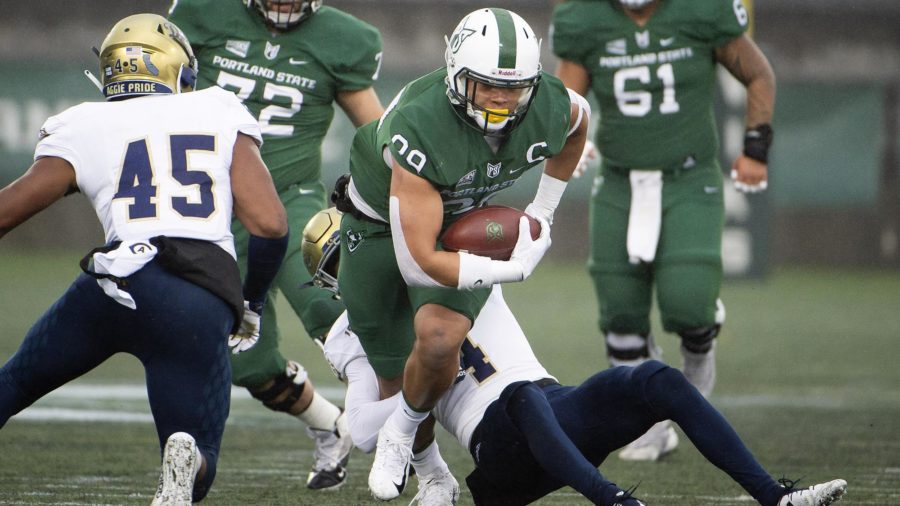
Height: 6’2”. Weight: 240lbs.
Pros: The epitome of consistency, Taumoepeau is tough, polished and well-rounded. He tested well at the Combine and looked great in his positional workout. While not the biggest for the position, the Vikings standout plays physical. Displaying good football IQ and versatility, he’s able to take on a wide variety of roles. Given his short stature, he’ll likely be deployed in full back and H-back roles and asked to do plenty of the unheralded dirty work. He brings a mean streak as a blocker, excelling as a lead man in the ground game.
As a receiver, he does much of his best work after the catch. Taumoepeau is a truck at top speed, breaking tackles, shaking off attempts to bring him down, and delivers a jolting stiff-arm. While not the most dynamic, he’s smooth on the move and in the right positions with a feel for space. There are generally no wasted steps in his plus footwork as he executes routes. His hands are consistent and his concentration in traffic is impeccable. A reliable role player, it’s easy to envision Taumoepeau becomes a consistent contributor on offense and special teams.
Cons: The physical measurables will hold back Taumoepeau’s draft stock and could put a cap on his upside. His shorter frame and catch radius do not provide the mismatch potential desired from top tight ends. Similarly, the Portland State prospect is smooth but not explosive. His upfield burst, short-area quickness and top end speed up the seam are not going to excite or consistently allow him to separate. He has missed time here and there with various knocks, including early in his senior season with a hamstring issue.
Wrapping Up: Taumoepeau’s measurables combined with small school status may see him dismissed or overlooked by some. A fairly anonymous Senior Bowl week didn’t help. Yet, the toughness and clinical execution, along with his versatile contributions as a blocker, receiver and special teamer give him every chance to find a home on an NFL roster. NFL Comparison: Will Dissly.
12. Derrek Tuszka, EDGE, North Dakota State. Grade: 6th-7th Round
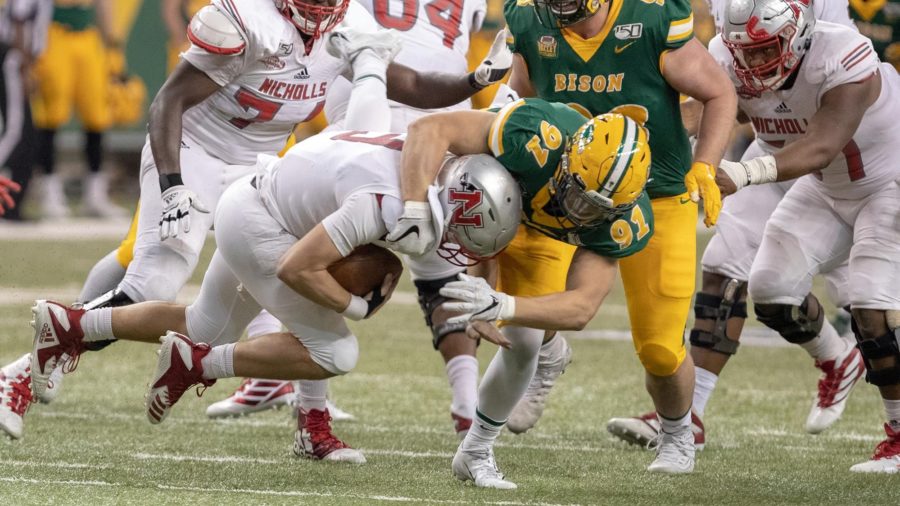
Height: 6’4”. Weight: 251lbs.
Pros: After productive sophomore and junior seasons for the Bison, Tuszka had his most statistically impactful year as a senior in 2019. He hit career highs in tackles for loss (19) and sacks (13.5). He has solid listed size for the edge, though limited length with 31 3/8” arms. Tuszka tested as a better athlete than expected at the Combine. His 6.87 3-cone drill particularly stood out. His well-rounded athletic profile lends itself to being effective against both the run and pass, working laterally and outside the tackles.
His motor is fantastic, bringing effort each snap and chasing down everything. He regularly hustles his way into additional stops. He should offer special teams contributions in addition to defensive rotation snaps. Tuszka flashes polished upper body technique, overall hand use and placement, and second-phase counters. More than just technical, the Bison edge defender shows power and punch on contact. He does his best work attacking into the body and working off contact as opposed to winning through truly explosive speed and bend consistently off the edge.
Cons: While the testing presented Tuszka as a well-rounded athlete, his film doesn’t suggest an overly explosive edge rusher. His success comes more from technical execution and motor than dynamic burst and bend round the edge. Those are very positive traits but the ceiling might be somewhat limited. His lack of reach in his arms will see him controlled and directed at times on his FCS film. More of the same against better tackles would be expected. While Tuszka’s relentless effort and hands will see him eventually get home, he’s regularly rode round the outside of the pocket and behind the action. Tuszka’s flexibility and bend round the edge is limited.
Wrapping Up: Tuszka stood out from the first snap of the first game of the 2019 season against Butler, and led all the way to another FCS National Title. His physicality and motor are complimented by solid athleticism. The Bison standout has some of the more refined hands in this edge class. A lack of length and flexibility along with modest upfield burst could limited the upside, however. He ought to contribute well as part of a front seven rotation and on special teams units. NFL Comparison: Lorenzo Mauldin.
13. Roland Rivers III, QB, Slippery Rock. Grade: 6th-7th Round
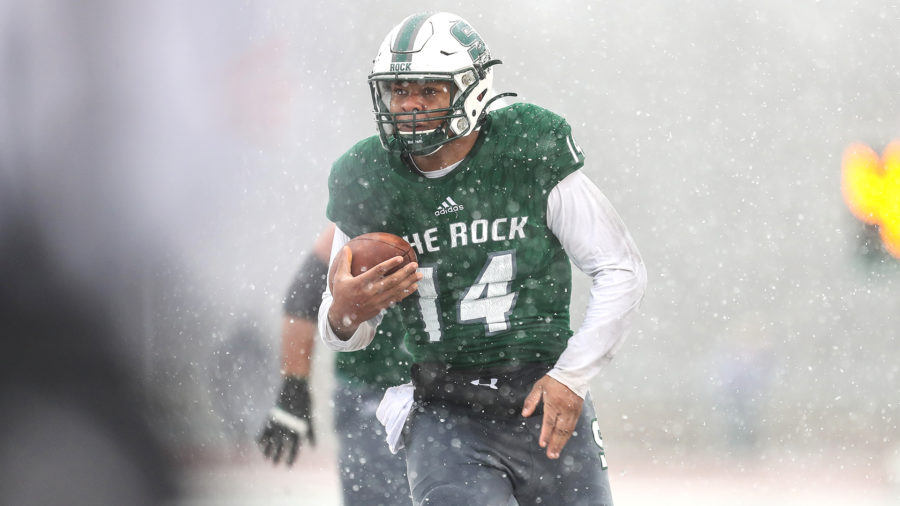
Height: 6’2”. Weight: 234lbs.
Pros: Though he played at the Division 2 level, Rivers has put himself on the NFL radar. His exceptional production included a ridiculous 52:7 TD to INT ratio as he tore up D2 defenses. That led to the Valdosta State transfer winning the D2 Heisman equivalent by taking the Harlon Hill trophy. While he didn’t land at one of the top All-Star events, he was able to go against higher competition at the Gridiron Showcase and Hula Bowl events. Rivers ticks a lot of boxes physically, with a thick powerful frame and a cannon of an arm.
His mobility features legit ability with the ball in his hands when the play breaks down. He can extend plays or take off himself as a physical runner with a full back build. Mentally, Rivers generally shows sound and quick decision making. He’s not afraid to launch it downfield with his deep ball velocity, without doing so recklessly. There’s some inconsistency of the accuracy with those deep shots but is capable of some impressive completions down the field. The threat of the big play itself keeps secondaries thinking.
Rivers’ mechanics feature an over-the-top release with effortless zip on his passes. There are no throws in the playbook that are off the table from a physical standpoint. That was never more obvious than his D2 playoff outing in a snowstorm versus Minnesota State this past season. His dominant season included the 52 passing TDs, along with 4460 pass yards at 67% completion rate. He added 700 yards on the ground with 9 rushing scores.
Cons: Prior to his transfer from Valdosta State, Rivers missed the 2017 season with a torn labrum that required surgery on his throwing shoulder. While Rivers’ interception numbers were low, his film does feature some throws that he was lucky to get away with. Some examples of incorrect reads and coverage recognition gave opportunities to linebackers to make a play on the ball that sometimes went unpunished.
During the Hula Bowl All-Star game, Rivers threw an ill-advised interception and generally looked a little uncomfortable during his series. There’s a work-in-progress in his reads that will also have to take on a step up in competition and defensive athleticism that will likely be challenging.
Wrapping Up: One of the more intriguing and potentially exciting developmental QB prospects in this class, taking a shot on Rivers ought to be far more appealing than some of the uninspiring Day 3 names that underwhelmed at big-time programs. It could go either way, but there’s legitimate upside with enticing physical traits and mental character to give himself a chance.
14. Alex Taylor, OT, South Carolina State. Grade: 6th-7th Round.
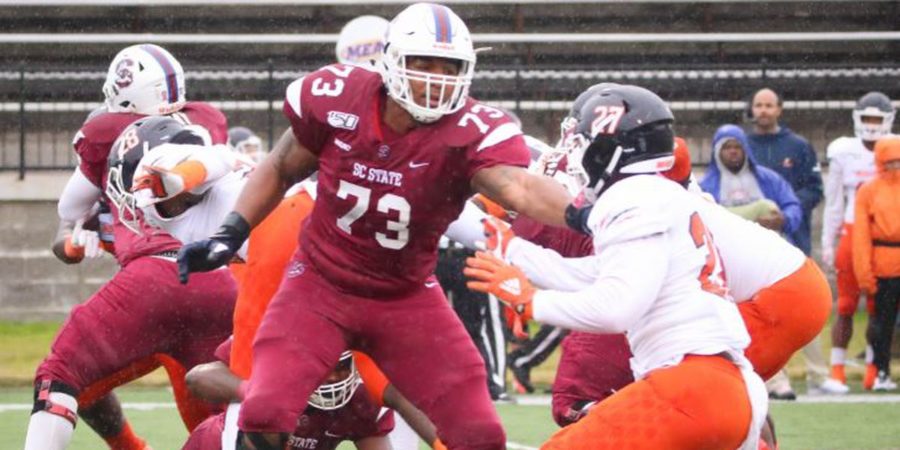
Height: 6’8”. Weight: 308lbs.
Pros: Taylor features ridiculous length among his elite physical measurables. His size and athleticism combo will be tough to ignore for those who bank on such traits. His upside along with the premium on the offensive tackle position makes it understandable to consider the risk/reward potential of Taylor. The multisport athlete has a basketball background, unsurprising with his length and agility. The advantage offered by his reach is an obvious positive in his pass pro ability. His fluidity and loose hips allow him to lower his pad level and make adjustments, to redirect.
Cons: While the length is a plus, Taylor is noticeably lean, particularly in his base. Adding bulk is a must for the next level. Though he can lower his pad level, he can be inconsistent in doing so. He is technically ragged throughout his game, in both pass protection and run blocking. Bending at the waist as he engages at the point is an occasional issue.
The most frustrating element of his game is late hands. When beaten it is often a result of losing the initial exchanges at the point of attack where Taylor has failed to connect. The former Appalachian State player transferred to SCSU with the intention of returning to playing basketball before ending up back on the football field. He will be asked questions on how much he enjoys playing football.
Wrapping Up: A polarizing prospect, Taylor has a wide deviation between his ceiling and floor. He’s very much a developmental prospect who could become a starting tackle or fail to materialize into a contributor. There are enough concerns to warrant waiting until Day 3 to select him, but it would not surprise to see him taken earlier. NFL Comparison: Julien Davenport.
15. Kyle Hinton, IOL, Washburn. Grade: 6th-7th Round
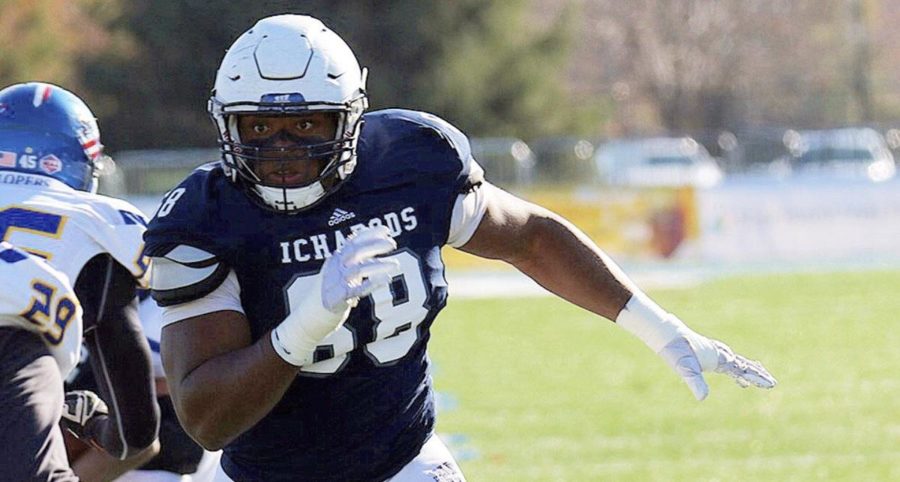
Height: 6’2”. Weight: 295lbs.
Pros: Hinton was one of the fortunate few able to complete a pro day prior to those events shutting down. His workout showcased the impressive combination of movement, athleticism and power. Hinton ran under 5.0 seconds, jumped 34.5” in the vert, and totalled 34 reps in the bench press. His arms measured in at 32.5” and almost 80” wingspan, which should pass thresholds with teams for interior linemen.
The athleticism absolutely translates to his game film, even in the context of playing lesser competition. Hinton consistently demonstrates easy fluid movement, lateral agility and upfield burst out of his stance. His combination blocks in the run game are a highlight of his game films. The aggressive blocker frequently finished his outmatched opponents to the turf with definitive pancake blocks.
As a pass protector, Hinton’s quick changes of direction are part of impressive overall adjustments and reactions. His recognition and redirecting allows him to pick up late blitzers, make secondary blocks and handle second-phase counters comfortably.
Cons: Though he has solid length and other compensating traits, the relatively smaller frame might not appeal to all teams. His physical domination at the lower levels is clear but can it carry over to the pro level? In addition, the left tackle will be required to switch positions for the NFL. Playing outside for the Ichabods, Hinton will shift inside at the next level.
Wrapping Up: A college left tackle, the Washburn lineman projects to a move inside for the pros. Even though he lacks ideal size and length, his impressive combination of strength and agility shows positive measurables beyond simply the height and weight. He’ll likely be scheme specific for the pros but will fit well in some systems. Teams have shown interest following his NFLPA Collegiate Bowl appearance and pro day. NFL Comparison: Austin Blythe.
16. Madre Harper, CB, Southern Illinois. Grade: 7th Round
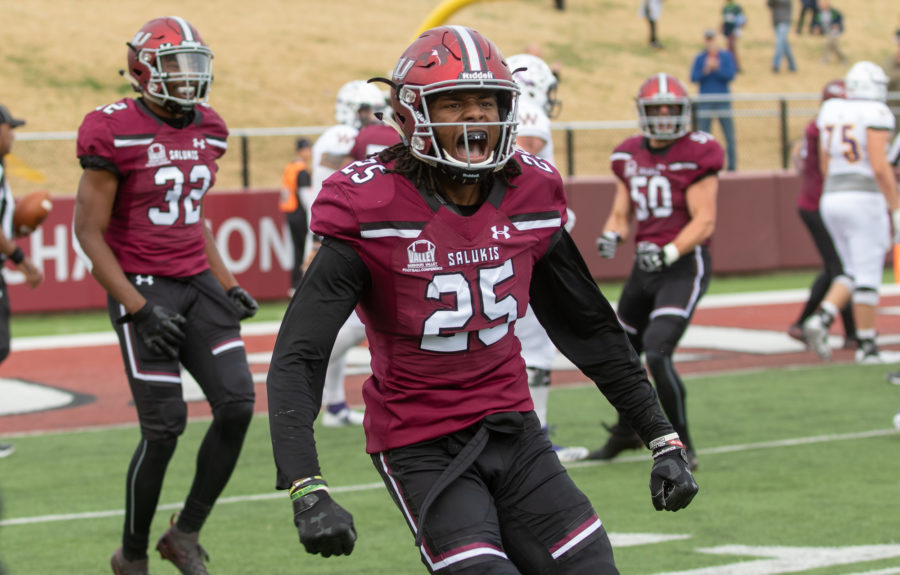
Height: 6’2”. Weight: 196lbs.
Pros: Harper made his case for a Day 3 selection with an eye-opening workout at Northwestern’s pro day. The Salukis corner has size and length, now also proving his speed and athleticism to complete the measurables. Harper tested as fast as 4.41 in his dash, while also showing agility in his exceptional 6.70 cone time. The lower-body explosion was reflected in his jumps, hitting 40” in the vertical and 11-2 in the broad. The testing adds to good statistical production as a senior. Harper totalled 42 tackles, 12 PBUs and 2 interceptions in 2019.
Harper’s game film shows much promise, particularly in zone coverage concepts. Mostly executing a slide step technique more so than a backpedal, Harper keeps his eyes inside and shows good reads, range and closing speed. He’s not deployed as often in press situations but his length and the physicality he brings to his game could lend itself well to developing his game more in such assignments. While the coverage skills are rightly prioritized, there’s a lot to like in his run support. Harper frequently brings force as a tackler and gets stuck into piles to finish plays.
Cons: An Oklahoma State transfer, Harper was dismissed from the Cowboys due to an unspecified violation of team rules. How teams view that situation will be a factor in his eventual grades and selection. Allowing a bit of separation at the top of routes, Harper’s abilities to keep in phase are there in flashes but could improve. Staying in the hip pocket of receivers could be more consistent. While the upside is enticing, he’s a work-in-progress with his technique and recognitions.
Wrapping Up: Southern Illinois safety Jeremy Chinn understandably gets the majority of the attention, but Harper has every chance of joining him as a draft selection from the Salukis’ secondary. While the pro day workout made his name more widely known, the film shows effective deployment of those athletic traits, flashing good coverage and playmaking skills. While he holds a late round grade here, there’s every chance for the toolsy corner to go earlier than expected. NFL Comparison: Isaiah Oliver.
17. Pete Guerriero, RB, Monmouth (NJ). Grade: 7th Round
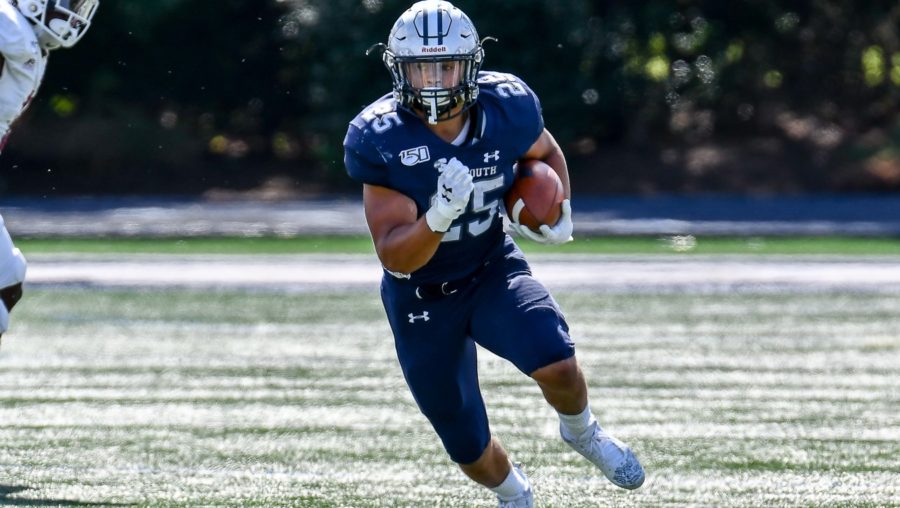
Height: 5’9”. Weight: 196lbs.
Pros: While his early declaration for the draft was a minor surprise, it felt like a wise choice given his position and the massive 2019 season. The numbers are hugely impressive, totalling 1995 rush yards on the season at 6.7 yards per carry and 18 rush TDs. He also had his best season as a receiver this past year, adding 32 catches for 336 yards and 2 TDs. Guerriero put together consistently dominant performances as desired from a small school prospect, regularly looking like the best prospect on the field.
Guerriero has nice foot quickness and though he has shorter strides, the former track sprinter shows decent top end speed. He’s impressive in short areas with lateral agility, sharp cuts and minimal wasted motion. While he might have some limitations up the middle, Guerriero is slippery between the tackles. What really stands out for projecting favorably to the next level, Guerriero shows subtlety with good feints, shifts, use of his eyes, working defenders to flat-foot them as his makes his cuts. His efficiency impresses, timing his cuts north well, with minimal lateral “dancing” in the backfield.
The Monmouth star makes quick decisions, reacting and anticipating when holes are opening. Though smaller, Guerriero steps up to physical challenges, takes hits and shows good contact balance. His stiff arm is effective at the FCS level. He’s likely never excel as a pass protector but shows high effort in his assignments. The dynamic back makes some highlight plays as a receiver, including on deeper targets. His versatile usage has included lining up from the slot.
Cons: Despite his big final season, Guerriero didn’t get a Combine invite. More significantly, the early declaring RB didn’t get to prove himself at an All-Star event against a higher level of competition, leaving some unknowns that could limit the draft stock. Though he flashes really well as a receiver, some of his route running requires some sharpening to fully unlock his potential in the passing game.
Wrapping Up: It’s difficult to find much to fault in Guerriero’s game film, as reflected in the brief “cons” paragraph. His combination of burst, vision, shiftiness, receiving ability and under-rated toughness is an appealing combination. His film looked good enough to have warranted a Combine invite, and grades as a worthy Day 3 prospect. NFL Comparison: Chris Thompson
18. Josh Pearson, WR, Jacksonville State. Grade: 7th Round
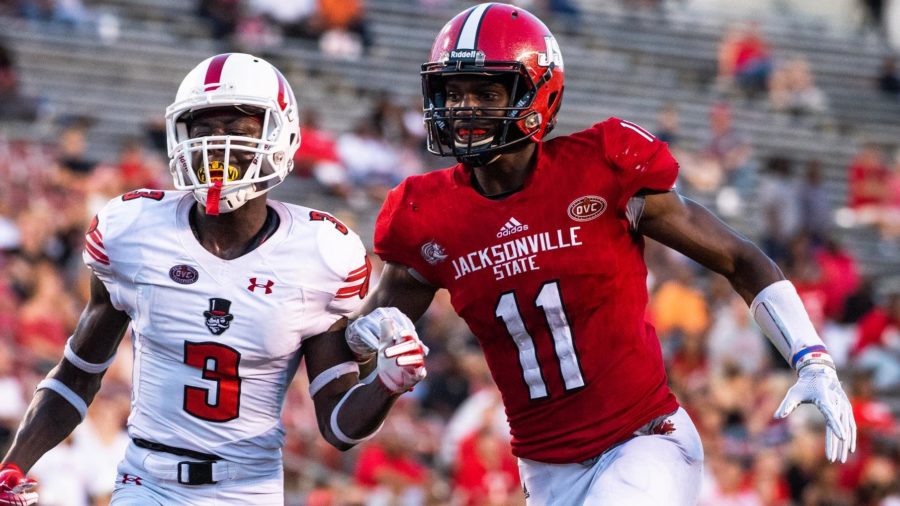
Height: 6’3”. Weight: 205lbs.
Pros: Pearson features a good-sized frame and an athletic, lean build. His nickname of Baby Julio gives away who he bases his game (and #11 jersey) on. While he’s not that caliber of athlete, he exceeded expectations at his pro day workout. Pearson was clocked as quickly as 4.44 in the dash and jumped 41.5” in the vertical. He added to that with a 10-8 broad jump, 4.18 shuttle and 7.22 3-cone. Pearson is a smooth runner with a consistent, reliable game. He offers an ideal catch radius and vertical to high point, and brings in the majority of balls that hit his window.
Pearson has thrived at the FCS level in contested situations and in the red zone. He’s totalled 30 receiving touchdowns over the past two seasons. The Gamecocks receiver should excel in interviews that could sell him to teams despite the limitations as an athlete. With high character both on and off the field, Pearson does a lot of work in the community and has received awards recognizing his work.
Cons: There could be a low ceiling with Pearson. As well as he tested, he doesn’t present as that level of athlete on film. The acceleration, short area quickness and general speed appear more modest than the mid-4.4 number from his pro day. He lacks explosion in his releases and breaks. His route running is solid but rounds out many of his breaks. Creating consistent separation is a question mark.
Wrapping Up: Pearson offers length, contested catch ability, good hands and motor. Initially appearing to be borderline as a draft, his outstanding pro day may have sealed a late selection. His high character and consistent production will help his chances. NFL Comparison: Devin Street.
19. Greg Liggs Jr, CB, Elon. Grade: 7th Round
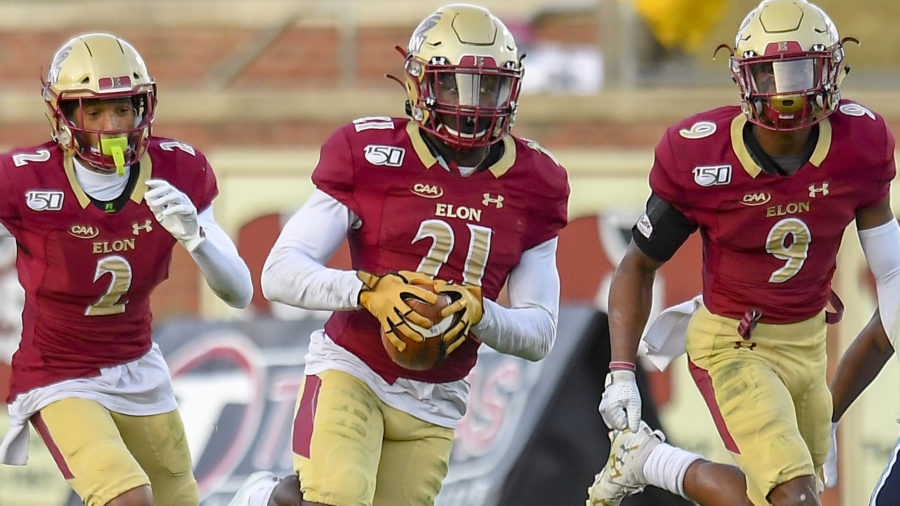
Height: 5’11”. Weight: 198lbs.
Pros: Disciplined yet aggressive, physical and athletic, there are no obvious holes in Liggs’ game. He offers a sturdy build with solid length (32.5” arms). His well-rounded skill set has seen him effectively deployed both outside and inside, including at nickel and some safety. That versatility could make him a valuable depth contributor on a roster, with the upside of a starter. He’s adept and comfortable in man, zone, press, off coverage, bail, bump-and-run.
Liggs Jr proved himself as a pro caliber athlete at the recent TEST Football Academy pro day event. The Pheonix corner ran a 4.47 laser timed 40-yard dash with a 1.47 10-yard split. His explosiveness resulted in a 40.5” vertical and 10-2 broad jump. He added a 7.12 3-cone and 4.13 shuttle along with 11 bench reps. The speed and agility contribute to his plus coverage skills. Liggs Jr has a smooth backpedal with loose hips as he transitions cleanly from press. The overall movement and sharp footwork compliment refined and instinctive technique throughout his game.
The Elon playmaker has fantastic ball skills that led to a massive 8 interceptions on the season (aided by big hands). Most of those came over the course of two 3-pick games. His natural body control and ability to high point combine with his aggressiveness to attack the ball in the air and jump in front of receivers to beat them to the ball.
Playing physically, he has a box safety mentality, never hesitating to deliver a forceful hit as he wraps up in the run game. Better than most corners at the point of attack, he can shed blocks, while using good punch on initial contact in coverage reps as well. Liggs Jr performed well at the Gridiron Showcase event and played impressive in his biggest matchup of the 2019 season against Wake Forest’s talented pass attack.
Cons: In truth, it’s a struggle to come up with many negatives or questions to list regarding Greg Liggs Jr. The performance against Wake Forest was excellent but remains relatively unproven against top competition. He has his moments of giving up a bit too much coverage underneath. There’s the occasional coverage rep in which he can drift from his receiver to allow a comfortable throwing window. Those instances are uncommon though.
Wrapping Up: Between the athletic profile compiled by his testing and his 15 career interceptions, Liggs Jr checks off a lot of boxes. The production holds up to film scrutiny with instincts in coverage alongside positional discipline and reliable technique. It’s the versatility that deserves to seal a selection on the final day of the draft. With continued development, there’s starting potential in the Elon standout. A useful role providing depth and special teams contributions ought to provide a solid floor to go with the upside. NFL Comparison: Ryan Smith.
20. Zach Sammartino, IOL, Dartmouth. Grade: 7th Round
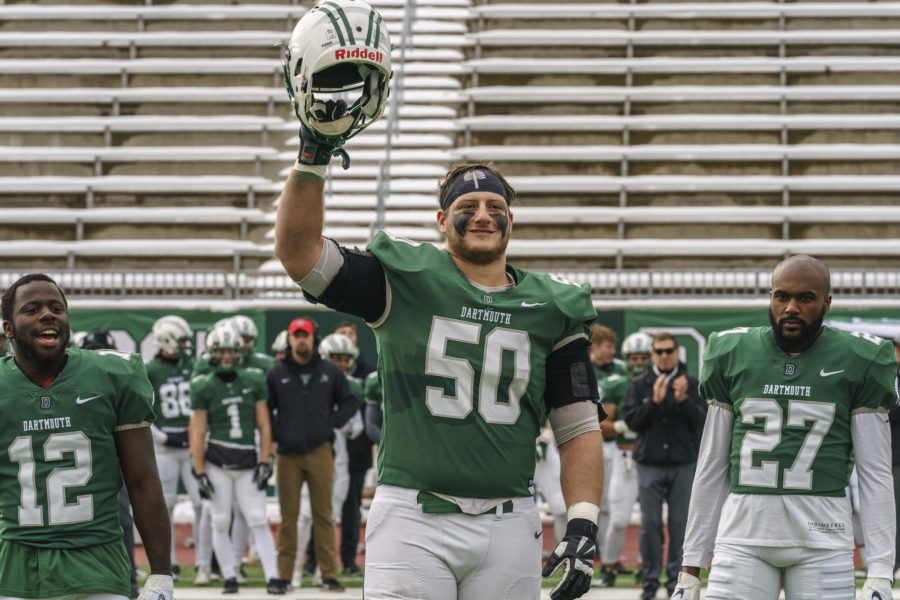
Height: 6’3”. Weight: 315lbs.
Pros: All-Ivy League as a senior, Sammartino has had a strong pre-draft process. The Dartmouth guard showed he offers versatility by lining up at center at the Gridiron Showcase All-Star event. He promoted himself with one of the most entertainingly dominant highlight video packages. Finally, he worked out well at an arranged pro day-style testing event.
As the pancake block-fest highlight video hinted at, Sammartino offers power and aggression as a run blocker in particular. The high-motor, high-effort lineman attacks off the snap and finishes through the whistle. More than just a mauler, he brings on-field intelligent and works hard at film study in looking for tendencies. Working well upfield, he has the balance and leverage to maximize his impact with solid hand placement. Once locked on, Sammartino is difficult to disengage from.
Cons: As impressive as the execution is as a run blocker, pass protection is a work in progress. This is in part due to the offensive scheme he was deployed in at Dartmouth. His technique, footwork and pass sets will need some adjustments. While Sammartino has solid size, his 32 1/8 arms provide modest but not top-end length for the position.
Wrapping Up: A relatively late starter to football, Sammartino has developed and progressed well as a player and prospect. With functional strength and athleticism, he adds physical intent and work ethic into the mix. His pass protection requires some development and polish but will put in the work to sharpen his all-round game. The potential to provide depth at guard and center adds roster value. NFL Comparison: Spencer Long.
CLICK THE LINKS BELOW TO NAVIGATE THE REST OF THE SMALL SCHOOL BIG BOARD!
PAGE 7: Top 150 Full Big Board
Feature Image Credit: Portland State University

